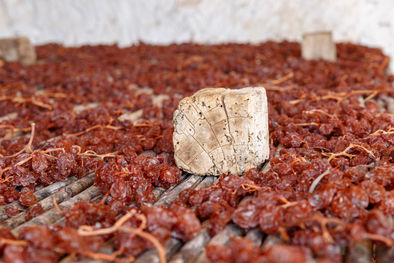Río| River


Soroll de ribera
Sonido de ribera | Riverside sound
| VAL. | Com és ben sabut el riu Xaló creua tota la Vall de Pop i continua dirigint-se fins a Xàbia per a desembocar al mar, vertebra i enllaça totes les poblacions, de fet aquestes històricament es fundaren al seu voltant per tal de poder explotar els recursos que del curs fluvial se'n deriven. Les seues voreres han estat testimoni dels diferents capítols de la història de cada poble. Però si fem referència al poble de Llíber, hem de canviar el nom del riu, és just en aquest punt quan el riu Xaló passa a anomenar-se Riu Gorgos.
A les voreres del riu, i nodrits tant per les terrasses fluvials depositades durant milers d'anys com per les seues aigües, anaren proliferant els diferents cultius dels quals depenia la subsistència dels seus pobladors. Però no tan sols l'agricultura gestionada pels lliberans i lliberanes era la que donava suport, sinó també aquella vegetació de ribera que anava creixent any rere any i que permetia altres activitats, com la boga o els canyars. I és que la canya per aquesta zona té 100 i un ús diferent. Vols saber quins són?
| CAS. | Como es bien sabido el río Xaló cruza todo el Valle de Pop y continua dirigiéndose hasta Xàbia para desembocar al mar, vertebra y enlaza todas las poblaciones, de hecho, estas históricamente se fundaron alrededor del río para poder así explotar los cursos que de cauce fluvial se pueden extraer. Sus riberas han sido testimonio de los diferentes capítulos de la historia de cada pueblo. Pero si hacemos incapié en el pueblo de Llíber, tenemos que cambiar el nombre del río, es justamente en este punto donde el río Xaló pasa a llamarse río Gorgos.
A la ribera del río y nutridos por las terrazas fluviales depositadas durante miles de años, fueron proliferando los diferentes cultivos de los cuales dependía la subsistencia de sus pobladores. Pero no solo la agricultura gestionada por los lliberanos y lliberanas era lo que les daba el sustento, sino también aquella vegetación de ribera que iba creciendo año tras año y que permitía otras actividades como la enea o los cañizares. Y es que la caña por esta zona tiene mil y un usos diferentes ¿Quieres saber cuáles son?
| ENG. | As is well known, the river Xaló crosses the whole of the Pop Valley and continues to Xàbia to flow into the sea. It is the backbone and links all the villages, in fact, these were historically founded around the river in order to exploit the watercourses that can be extracted from the riverbed. Its banks have borne witness to the different chapters in the history of each town. But if we focus on the village of Llíber, we have to change the name of the river, it is precisely at this point where the river Xaló is renamed the river Gorgos.
On the banks of the river and nourished by the fluvial terraces deposited over thousands of years, the different crops on which the subsistence of its inhabitants depended proliferated. But it was not only the agriculture managed by the lliberanos and lliberanas that provided them with their livelihood, but also the riverside vegetation that grew year after year and which allowed other activities such as bulrushes and reed beds. And the fact is that the reed in this area has a thousand and one different uses. Do you want to know what they are?











